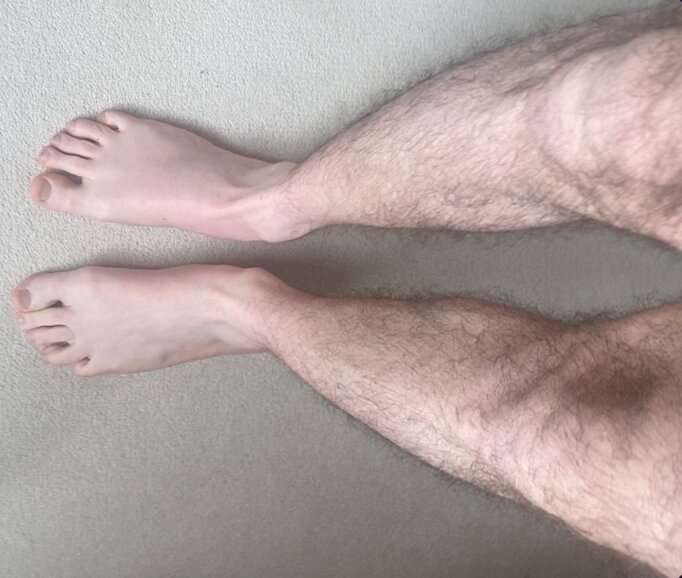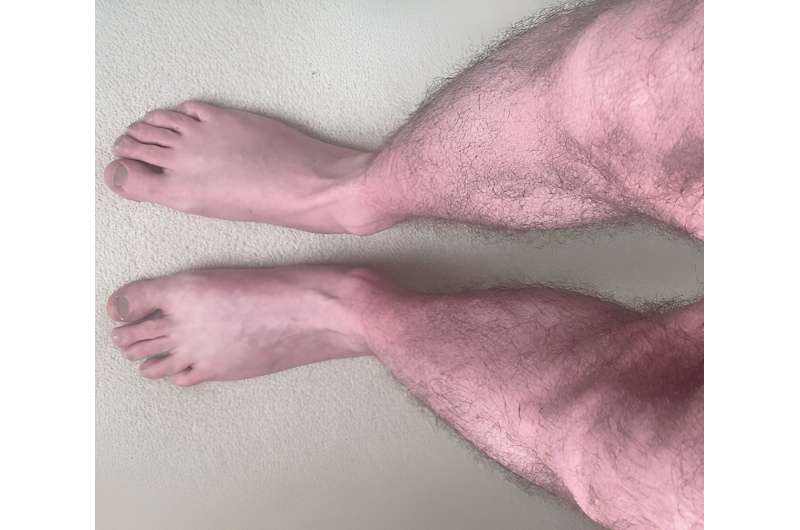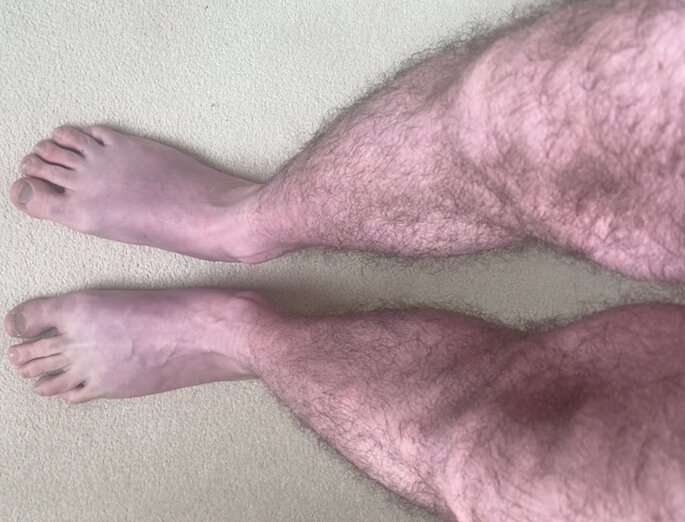This article has been reviewed according to Science X's editorial process and policies. Editors have highlighted the following attributes while ensuring the content's credibility:
fact-checked
peer-reviewed publication
trusted source
proofread
Raising awareness of long COVID 'blue legs' symptom

An unusual case of a long COVID patient's legs turning blue after 10 minutes of standing highlights the need for greater awareness of this symptom among people with the condition, according to new research. The study, "Venous insufficiency and acrocyanosis in long COVID: dysautonomia," has been published in The Lancet.
The paper, authored by Dr. Manoj Sivan at the University of Leeds, focuses on the case of one 33-year-old man who developed with acrocyanosis—venous pooling of blood in the legs.
A minute after standing, the patient's legs began to redden and became increasingly blue over time, with veins becoming more prominent. After 10 minutes the color was much more pronounced, with the patient describing a heavy, itchy sensation in his legs. His original color returned two minutes after he returned to a non-standing position.
The patient said he had started to experience the discoloration since his COVID-19 infection. He was diagnosed with postural orthostatic tachycardia syndrome (POTS), a condition that causes an abnormal increase in heart rate on standing.
Dr. Sivan, Associate Clinical Professor and Honorary Consultant in Rehabilitation Medicine in the University of Leeds' School of Medicine, said, "This was a striking case of acrocyanosis in a patient who had not experienced it before his COVID-19 infection.
"Patients experiencing this may not be aware that it can be a symptom of long COVID and dysautonomia and may feel concerned about what they are seeing. Similarly, clinicians may not be aware of the link between acrocyanosis and long COVID.
"We need to ensure that there is more awareness of dysautonomia in long COVID so that clinicians have the tools they need to manage patients appropriately."
Long COVID affects multiple systems in the body and has an array of symptoms, affecting patients' ability to perform daily activities. The condition also affects the autonomic nervous system, which is responsible for regulating blood pressure and heart rate.

Acrocyanosis has previously been observed in children with dysfunction of the autonomic nervous system (dysautonomia), a common symptom of post-viral syndromes.
Previous research by Dr. Sivan's team has shown that both dysautonomia and POTS frequently develop in people with long COVID.

Dysautonomia is also seen in a number of other long-term conditions such as fibromyalgia and myalgic encephalomyelitis, also known as chronic fatigue syndrome or ME.
Dr. Sivan said, "We need more awareness about dysautonomia in long term conditions; more effective assessment and management approaches, and further research into the syndrome. This will enable both patients and clinicians to better manage these conditions."
The research is the latest work by the team in the field of autonomic medicine. Other developments include a home test for people with symptoms of autonomic dysfunction in conditions such as long COVID, chronic fatigue syndrome, fibromyalgia, and diabetes 1 and 2, where people experience dizziness or blackouts.
More information: Nafi Iftekhar et al, Venous insufficiency and acrocyanosis in long COVID: dysautonomia, The Lancet (2023). DOI: 10.1016/S0140-6736(23)01461-7 , linkinghub.elsevier.com/retrie … ii/S0140673623014617




















